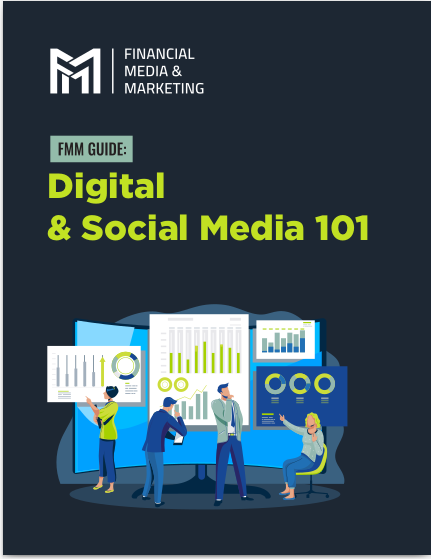Key Takeaways:
-
Data-driven insights help you understand your clients’ needs and behaviors, allowing you to tailor your services effectively.
-
Leveraging analytics refines your business strategy and builds stronger, more meaningful client relationships.
Understand the Power of Data in Financial Advising
In today’s digital age, data is a goldmine for financial advisors. It’s not just about gathering information—it’s about interpreting that data to better understand your clients and improve your approach. With the right insights, you can anticipate needs, solve problems, and offer personalized solutions that set you apart from competitors.
What Is Data-Driven Decision Making?
Data-driven decision making involves analyzing patterns, behaviors, and preferences to guide your business strategies. It goes beyond intuition or guesswork, giving you concrete evidence to back your decisions.
Why It Matters
Clients’ financial goals and concerns vary widely. Using data helps you:
-
Identify trends and anticipate changes.
-
Deliver tailored advice that resonates.
-
Build trust through informed, reliable recommendations.
Start by Collecting the Right Data
To leverage data effectively, you need to start with the right information. Not all data is equally valuable, so focus on what truly matters to your business goals and your clients.
Key Data Points to Track
-
Demographics: Age, income, marital status, and employment details provide a snapshot of your clients’ financial situation.
-
Financial Goals: Retirement planning, debt management, or investment preferences.
-
Behavioral Patterns: How often clients interact with your services, their preferred communication methods, and any trends in their inquiries.
-
Feedback and Reviews: Insights into what clients appreciate and where they see room for improvement.
Tools for Data Collection
Leverage tools like surveys, customer relationship management (CRM) systems, and analytics platforms. These tools organize data into actionable insights, making it easier to identify patterns and trends.
Analyze and Interpret the Data
Raw data is just numbers until you interpret it. The real value comes from understanding what the data reveals about your clients.
Segment Your Clients
Divide your clients into meaningful categories based on their needs and behaviors. For example, you might group clients by life stage, such as young professionals, families, or retirees. This segmentation allows you to tailor your approach for each group.
Look for Patterns
Analyze trends over time. Are more clients asking about specific investment strategies? Is there a seasonal uptick in inquiries about tax planning? Recognizing these patterns helps you stay proactive and relevant.
Use Visualizations
Charts, graphs, and dashboards make complex data easier to understand. Visual tools help you spot trends and communicate insights effectively, whether with your team or clients.
Turn Insights into Actionable Strategies
Once you’ve analyzed your data, it’s time to put those insights into action. This is where you turn information into value for your clients.
Personalize Client Interactions
Use the data to tailor your communication and recommendations. For instance:
-
Suggest investment strategies based on a client’s risk tolerance.
-
Send targeted emails addressing specific client concerns, like preparing for retirement or navigating market volatility.
Refine Your Marketing Efforts
Data-driven insights can improve how you market your services. Identify which channels drive the most engagement—whether it’s email campaigns, social media, or webinars—and focus your efforts there.
Optimize Your Services
Are there gaps in your offerings that data has revealed? Perhaps clients are frequently asking about a service you don’t currently provide. Use this feedback to expand your offerings and better meet their needs.
Maintain a Client-Centric Focus
While data is a powerful tool, it’s important to remember that your clients are individuals, not just numbers. A client-centric approach ensures that the human element remains at the heart of your strategy.
Balance Automation with Personalization
Automation tools can streamline processes like appointment scheduling or follow-ups, but they should complement—not replace—personalized service. Use data to enhance, not eliminate, meaningful client interactions.
Build Trust Through Transparency
Clients value transparency, especially when it comes to how their data is used. Be clear about what information you collect, why it’s important, and how it benefits them. This openness builds trust and strengthens your relationships.
Seek Regular Feedback
Data-driven strategies should evolve with your clients’ needs. Regularly ask for feedback to ensure your approach remains aligned with their expectations.
Measure the Impact of Your Efforts
Tracking the success of your data-driven initiatives ensures continuous improvement. Use metrics to gauge what’s working and where there’s room to grow.
Key Performance Indicators (KPIs) to Track
-
Client Retention Rates: Are more clients staying with you long-term?
-
Engagement Metrics: Track email open rates, webinar attendance, or social media interactions.
-
Conversion Rates: Measure how many leads turn into clients based on your outreach efforts.
-
Client Satisfaction Scores: Use surveys to gauge how well you’re meeting client expectations.
Adjust Strategies Based on Results
If a particular approach isn’t delivering the desired results, don’t hesitate to adjust. Continuous improvement ensures your strategies remain effective and relevant.
Stay Ahead with Predictive Analytics
Predictive analytics uses historical data to forecast future trends. While it may sound complex, incorporating predictive insights into your practice can provide a significant advantage.
Anticipate Client Needs
By analyzing past behaviors, you can predict what services or advice clients might need next. For instance, if a client has recently started a family, you might suggest strategies for saving for college.
Identify Market Opportunities
Predictive analytics can also highlight broader market trends, helping you stay ahead of industry changes. Use these insights to position yourself as a forward-thinking advisor.
Invest in Advanced Tools
While basic analytics tools are a great starting point, consider investing in more advanced solutions as your practice grows. These tools can provide deeper insights and more accurate predictions.
Embrace a Culture of Continuous Learning
The world of data is always evolving, and staying informed is key to maximizing its potential for your business.
Stay Updated on Trends
Follow industry news and attend conferences or webinars to learn about the latest advancements in data analytics. Staying informed ensures you’re always using the best tools and strategies available.
Train Your Team
If you work with a team, ensure everyone is on the same page when it comes to using data. Regular training sessions can help your team interpret insights and apply them effectively.
Experiment and Innovate
Don’t be afraid to try new approaches. Experimenting with different data-driven strategies can lead to valuable discoveries that improve your business.
Transforming Data Into Meaningful Client Relationships
Using data-driven insights allows you to better understand your clients, refine your business approach, and deliver personalized solutions. By focusing on what the data reveals and pairing it with a client-centric mindset, you’ll not only meet client expectations but exceed them, fostering long-term loyalty and growth for your practice.










